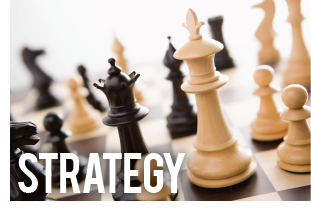
Why Free Isn't Always Your Best Offer
One of the most common, and intense, discussions we have with our clients is about offer. As in, what do you think is the best offer for this TV campaign, or this print ad, or this radio spot? Our response is always the same – go out with your absolute strongest offer, for the particular customer you are after. However, the strongest offer doesn’t necessarily mean a free offer. So read on to gain a better understanding of how your direct response offer must match the targeted consumer’s transactional mindset.
Let’s start with FREE. We are big fans of the four letter word as it relates to direct response marketing. In most offers we construct, if possible, there is a free component. We know historically that free drives bigger response. So there is much merit in the word free, as well as an offer incorporating something free. For example, bonus or free items, of course, sweeten any type of offer and build value in the consumer’s mind. Many times this free component is the catalyst to push the consumer to transact. So, free is good. However, while free add-ons or bonus items are effective, free does not always work as a main offer component. It’s critical to understand why.
Where FREE gets dicey. We’ve all seen them running heavily – DRTV offers with free trial, just pay p&h; or buy one, get one free, just pay p&h, etc. As of late, the lead price is sinking even lower, to around the $10 mark at this point. While we do see these types of offers work from time to time, you must be aware of all of the implications of this type of offer. And in many cases, this offer will not be the best, or strongest, type offer for your product or service. This is where having a complete understanding of your customer and their mindset comes into play. Let’s take a look at the pros, and the risks, of FREE and BOGO for your product/brand. These risks come straight from real world campaigns, several which are running now.
First, a typical free offer might look like this:
Try this widget in your home today for free, just pay P&H. You’ll also receive this free widget when you call or go online.
And a BOGO like this:
Get this widget for just $9.95, plus P&H. But wait, when you order, we’ll double the offer and give you a second widget absolutely free. Just pay additional P&H.
Pros of FREE/BOGO:
1) Grabs the consumer’s attention quickly
2) Low consumer barrier to cross for engagement
3) Easy for consumer to justify/rationalize the transaction
4) Can create big value build in the consumer’s mind
5) Can drive large up front response/inquiries, a requirement for continuity based programs
Risks of FREE/BOGO
1) Can turn off more affluent potential customers
2) Often degrades the brand/perceived value of the product or service
3) Typically drives a lower quality and lower converting respondent
4) Significantly more customer service issues, including returns
5) Consumers reject add-ons such as additional P&H, upsells or club offers and only want free item
6) Many times tied to an ongoing spend commitment by the consumer
As you can see, while there are some good reasons to test a true free offer, there’s quite a bit of downside. It’s at this point where we work with clients to zero in on the actual, true objective of the campaign. Is it just to drive up front sales revenues? Is it to build a customer database quickly that you can remarket to? Is it to drive retail distribution and ultimately sales at retail? Is it to build a brand over the long haul?
By staying true to the real objective, you can better align with the particular customer you are seeking, and thus find the right offer that resonates. For example, over the years we’ve seen that free offers or BOGO offers are not the best way to build trust and legitimacy (requirements for brand building) for new products in the minds of the consumer. While they do satisfy an instant gratification need for the value seeker, free offers tend to generate short term awareness.
Conversely, if you understand your target customer thoroughly, you may find that what resonates best is finding the right price, in conjunction with a solid value proposition. In many cases, we’ve tested free offer vs. a price disclosed offer on the same product, with the price disclosure version actually performing better. Many consumers, when presented with a good product that resolves their problem, will be more than willing to transact right then and there. Keep in mind, it is possible to oversell unnecessarily to consumers with the free or BOGO offer.
In the end, taking time to think through your potential customer’s mindset and the category in which you are operating are essential early steps in direct response offer development. By avoiding a possible herd mentality that free is always better, you can now think logically about what the consumer actually wants, needs and what propels them to transact.
